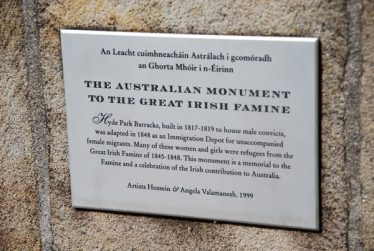Famine Orphan Emigration 1848-1850



Extracts from Barbara Barclay’s wonderful work. See full articles at:http://mayoorphangirls.weebly.com/
“a group of underprivileged and destitute young women
whose voices are so rarely heard on the historical stage”
Trevor McClaughlin (1991)
[including those from Ballinrobe]
On arrival in Australia, the Immigration Agent recorded personal details for each of the orphan girls, including their ‘Native Place’. For the girls on the Lady Kennaway in Melbourne, this was recorded as either Co Mayo or Ballina. More detail was given for the Inchinnan and the Panama in Sydney, where the orphan girls gave either the name of the workhouse they came from, or their town, townland, or parish, as their native place. The native places (where known) for the Mayo girls is mapped in the image to the right.
This inconsistency in the recording ‘Native Place’ becomes an issue when trying to locate each girl in the Irish records, in addition to the inadequacies of the Irish records themselves.
Civil registration of births, marriages and deaths did not begin in Ireland until 1864, so church records are used for events prior to this date. Only five Mayo orphan girls professed to be of a different religion to Roman Catholic, and unfortunately the availability of Catholic church records in Mayo is variable, as different parishes commenced registration at different times.
The Mayo girls on the Panama came from the four Mayo workhouses that participated in the Emigration Scheme. Ballina sent 40 girls, Ballinrobe sent 25, Castlebar sent 15, and Westport sent 10 girls.
On arrival in Sydney, the Immigration Agent recorded the ‘Native Place’ for each of the girls. The Mayo orphan girls gave either the name of the workhouse, or their town, townland, or parish of origin. A map showing the location of these places can be found on The Mayo Girls page.
For example:
- Mary Barrett, ex Inchinnan, was born c.1830 in Addergoole; those parish records did not begin until 1840.
- The McNamara/MacNamara sisters, ex Panama, were born in Achill c.1830 and 1831; Achill parish registers began in 1868.
Consequently, even with parental names provided in the Sydney Shipping Lists, it can prove almost impossible to correctly identify each girl with their townland or parish of origin. At present, of the 137 Mayo orphan girls in the Scheme, only two, Mary Brown and Ann Duke, both ex Panama, could be traced with some confidence in the Irish records. This situation may be improved in individual cases where descendants of the Mayo orphan girls may have other evidence of place of origin of their ancestor.
First Employment
The Australian records indicate where, and by whom, the orphan girls were first employed after their arrival in the colony. This information was recorded in the ‘Register and application for orphans’, first made available by Trevor McClaughlin (1991 and 2001) and now accessible via searching individual names on the Irish Famine Memorial Sydney Database.
A map of the first employment locations of the Mayo orphan girls, where known, is shown to the right.
Outside of the major centres of Sydney and Melbourne, the map reveals that many Mayo orphan girls were sent to the south coast of New South Wales, around Wollongong and Kiama.
Knowing the place of employment can give an indicator of the life the girls may have experienced (for example, hired in the city or the country, and by whom), as well as helping to narrow down an area where they may have married, thus providing a focal point to enable searching for references in local newspapers.
Individual stories are told here.
Ballinrobe Workhouse Records
The archives of the Ballinrobe Poor Law Union are held in digital format in the Local Studies Collection in Mayo County Library; they are the only poor law union records held in Mayo.
The collection covers the period 1844-1926 and includes minute books, financial records, and outdoor relief registers. Unfortunately there are significant gaps in the records, including the period covering the Orphan Emigration Scheme. However, it is recorded in official records that 25 girls were sent from the Ballinrobe workhouse as part of the Scheme; they departed on the Panama, which departed from Plymouth on 6 October 1849 and arrived in Sydney on 12 January 1850.
The Scheme must have been considered a success by the Board of Guardians, as the minutes of 26 April 1850 record “that we apply to the Poor Law Commissioners to send 50 Orphan Girls to Australia in the same manner that the past Emigrants were sent from this Union”. However, at this stage the Orphan Emigration Scheme had already been discontinued by the Australian colonial authorities.
To see full article go to Barbara Barclay’s website at:
http://mayoorphangirls.weebly.com/
Irish Famine Memorial Sydney, Australia

No Comments
Add a comment about this page